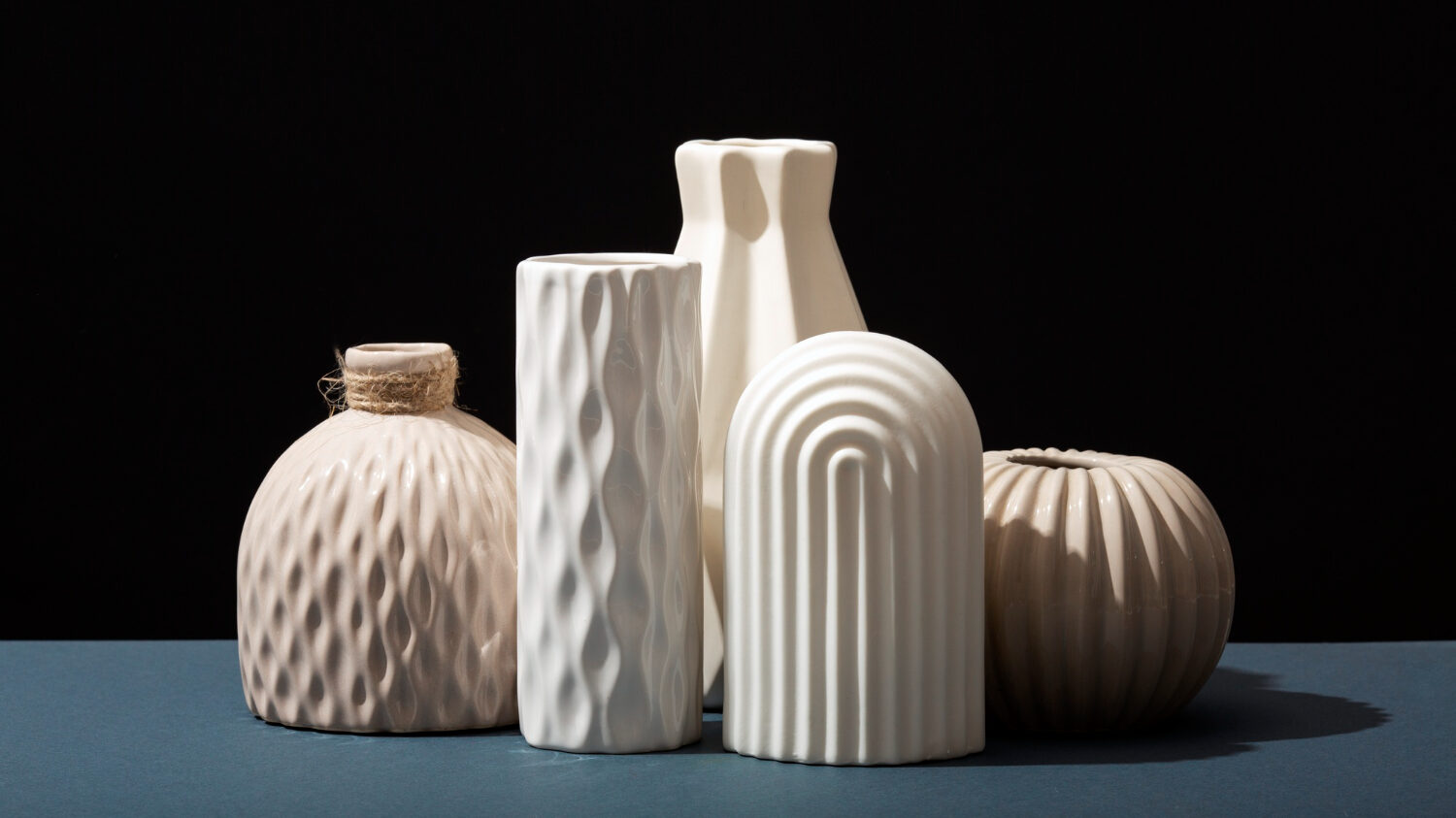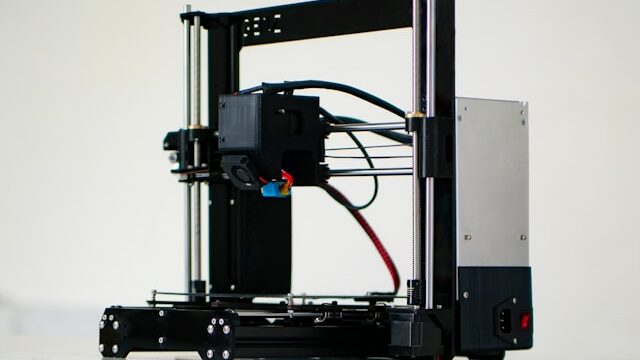Do you want to learn more about the different ways you can use 3D printing in your gardening projects? At Imprimy.com, we are here to explain everything about 3D printing in gardening.
3D printing in gardening allows for the creation of customized and functional objects such as self-watering pots and plant supports, but it has limitations in terms of material durability against outdoor conditions and precision compared to traditional manufacturing methods.

What are the advantages of 3D printing in gardening?
3D printing in gardening offers significant advantages, including customization of objects like pots and plant supports, innovation with self-watering systems, and waste reduction through tailor-made production, while enabling increased creativity and garden space optimization.
Customization in 3D printing for gardening
Customization in 3D printing for gardening allows gardeners to create tailor-made objects suited to their specific needs. This technology enables the design of pots and planters in various shapes and sizes, irrigation systems tailored to individual plant requirements, and plant supports like stakes and trellises.
This personalization fosters innovation and creativity, while providing sustainable and cost-effective solutions. Gardeners can optimize space and resources, while adding a unique touch to their garden.
Durability in 3D printing for gardening
The durability of 3D printing in gardening is a major advantage of this technology. By using recyclable and biodegradable materials like PLA (polylactic acid), gardeners can reduce their ecological footprint. 3D printing also helps minimize waste by producing only the necessary objects, avoiding resource waste.
Furthermore, printed objects can be designed to be reusable and repairable, extending their lifespan. This sustainable approach supports the creation of more environmentally friendly gardens, while providing cost-effective and innovative solutions.
The cost-effectiveness of 3D printing in gardening
The cost-effectiveness of 3D printing in gardening is significant, offering multiple financial benefits to gardeners.
First, 3D printing helps reduce costs associated with buying manufactured products by enabling the creation of custom objects at a lower price. Gardeners can print pots, planters, irrigation systems, and plant supports using affordable materials like PLA.
Moreover, the ability to easily repair or replace damaged parts prevents additional expenses. 3D printing also optimizes resource use by producing only what’s needed, reducing waste and associated costs.
Finally, the initial investment in a 3D printer can be quickly recouped through long-term savings, making this technology accessible and profitable for gardening enthusiasts.
Innovation enabled by 3D printing in gardening
Innovation made possible by 3D printing in gardening opens up new creative and functional possibilities for gardeners. This technology enables the design of unique, custom-made objects, such as pots with complex shapes, personalized irrigation systems, and plant supports tailored to specific needs. Gardeners can experiment with different materials and designs, creating innovative solutions to optimize plant growth and space usage.
3D printing also promotes idea and model sharing within the gardening community, fostering a culture of collaboration and continuous improvement.
What are concrete applications of 3D printing in gardening ?
Concrete applications of 3D printing in gardening include the creation of custom flower pots, tailored plant supports, automatic watering systems, custom stakes and trellises, as well as unique garden decorations. These applications enable space optimization and enhance the efficiency of gardening.
3D printing of pots and planters
3D printing of pots and planters allows gardeners to create custom-designed containers that suit specific plant needs, such as unique shapes, sizes, and drainage systems. This technology enables the production of personalized pots that can accommodate the growth patterns and aesthetics of different plants, ensuring healthier growth and better root development.
Additionally, gardeners can experiment with materials, including biodegradable or recycled filaments, contributing to sustainable gardening practices. Customization also allows for optimizing space and creating space-saving solutions, such as stackable planters or vertical garden containers.
3D-printed irrigation systems
3D-printed irrigation systems offer a highly customizable and efficient way to water plants. By designing and printing tailored systems, gardeners can create drip irrigation, self-watering planters, or automated watering solutions suited to specific garden layouts and plant needs.
These systems can be adjusted for water flow, ensuring that each plant receives the optimal amount of moisture. 3D printing also allows for the creation of compact, space-saving designs, reducing water wastage and improving overall irrigation efficiency. Additionally, gardeners can experiment with different materials to make systems that are both durable and eco-friendly, using recycled or biodegradable filaments.
3D-printed plant supports
3D-printed plant supports offer a wide range of possibilities for gardeners to create customized solutions that enhance plant growth. These supports can include trellises, stakes, cages, and plant towers, all designed to suit specific plant types and growth habits.
With 3D printing, gardeners can tailor the size, shape, and material of supports to meet the needs of different plants, whether they require vertical support, horizontal spreading, or specialized structures to protect delicate stems. This level of customization improves plant health and makes it easier to manage growth in small spaces or unconventional garden layouts.
Additionally, 3D-printed supports can be made from recyclable or biodegradable materials, offering both sustainability and durability. The flexibility of this technology allows for creative designs that not only support plants effectively but also add a unique aesthetic touch to the garden.
3D-printed gardening tools
3D-printed gardening tools offer a personalized and cost-effective solution for gardeners, allowing them to create tools that are ergonomic, custom-sized, and tailored to their specific needs. Some examples include:
- Trowels and Shovels: Custom designs can fit the gardener’s hand size or specific gardening tasks, such as digging in tight spaces or planting delicate seedlings.
- Pruners and Shears: 3D printing allows for the creation of lightweight, ergonomically designed pruning tools that fit comfortably in the hand and improve cutting efficiency.
- Watering Cans: Custom-designed watering cans can include features such as adjustable spouts, lightweight handles, and unique shapes for easy pouring.
- Weeders and Rakes: Tailored to different garden types, these tools can be designed with custom-length handles or specific head shapes to make weeding and raking easier.
- Garden Scoops: Ideal for handling soil or fertilizer, 3D-printed scoops can be designed for specific measurements or unique ergonomic needs.
These tools can be made from recyclable or biodegradable materials, contributing to sustainable gardening. The ability to print tools on demand also reduces the need for mass-produced, store-bought alternatives, cutting costs and minimizing waste.
3D-printed garden decorations
3D-printed garden decorations offer endless possibilities for personalizing outdoor spaces with unique and creative designs. Gardeners can produce a wide range of decorative elements that suit their individual style and garden theme. Some examples include:
- Sculptures: Custom garden sculptures in various shapes, from abstract designs to animal figures, can be easily printed to add a unique artistic touch.
- Bird Feeders: 3D printing allows the creation of functional and artistic bird feeders, tailored to different bird species and garden sizes.
- Wind Chimes: Custom wind chimes made from different materials can be designed to produce unique sounds, adding an aesthetic and calming element to the garden.
- Garden Markers: Create personalized plant markers to label plants in a creative and organized manner, helping gardeners keep track of their varieties.
- Planter Covers: Add style to your pots by designing and printing decorative covers or enclosures, giving the garden a unified look.
- Fairy Gardens or Miniatures: Design and print miniature figures, houses, or furniture to create a whimsical, magical atmosphere in garden spaces.
These 3D-printed decorations are often made from durable, weather-resistant materials and can be easily customized to fit personal tastes and garden themes, all while promoting creativity and individual expression in gardening.
How to get started in 3D printing for gardening?
To get started in 3D printing for gardening, begin by acquiring a 3D printer suited to your needs, then learn to use a 3D modeling software to design customized items such as pots and plant holders, and experiment with different materials and simple projects to develop your skills before moving on to more complex creations.
Choosing the right 3D printer for 3D printing in gardening
To buy the right 3D printer for 3D printing in gardening, it’s essential to consider several key factors. First, evaluate the printer size and its printing volume to ensure it can produce objects large enough for your gardening projects, such as pots or plant holders.
Next, examine the compatible materials; a printer capable of using PLA, a biodegradable material, would be ideal for eco-friendly applications. The print resolution is also crucial to achieve fine details, especially if you’re printing decorative items.
Finally, consider the ease of use and maintenance of the printer, as a reliable and easy-to-maintain device will allow you to focus on your gardening projects without technical hassles.
Modeling software for 3D printing in gardening
For 3D printing in gardening, choosing the right modeling software is crucial to create customized and functional objects.
- Tinkercad is often recommended for beginners due to its intuitive interface, allowing for easy design of pots, plant holders, and other garden accessories.
- Blender, although more complex, offers advanced capabilities for detailed and artistic models, making it ideal for projects requiring high precision.
- Fusion 360 is also popular for its professional tools, perfect for technical designs and projects requiring precise engineering.
- Finally, SketchUp is appreciated for its simplicity and its 3D model library, making it easy to quickly create prototypes for gardening.
The choice of software will depend on your skill level and the specific requirements of your gardening projects.
The most effective materials for 3D printing in gardening
For 3D printing in gardening, the choice of materials is crucial for the durability and functionality of the objects created.
- PLA is often preferred for its biodegradability and ease of printing, making it ideal for flower pots or plant labels.
- PETG offers better resistance to weather and UV rays, making it suitable for items designed to stay outdoors.
- ABS is also an option for its strength, although it’s less eco-friendly. For applications requiring great sturdiness, such as plant supports or trellis structures, reinforced composite materials, such as wood-filled PLA, can be used.
- Finally, resins can be used for fine details and decorative items, although they require more complex post-processing.
The choice of material will depend on the specific needs of your gardening project and the environmental conditions to which the objects will be exposed.
Find tutorials and resources to make your first 3D prints in gardening
To make your first 3D prints in gardening, several resources and tutorials are available to guide you. Some websites offer innovative ideas such as self-watering pots and growth supports, which can be customized and printed to perfectly fit your needs.
Others provide a collection of STL files for various 3D printable gardening tools, such as watering can nozzles and tool holders.
Finally, some focus on creating hydroponic gardens from recycled materials and 3D prints, with detailed tutorials for building self-sustaining and decorative indoor gardens. These resources will help you make the most of 3D printing to enhance and personalize your gardening space.
What are the limitations of 3D printing in gardening?
The limitations of 3D printing in gardening include the reduced durability of materials when exposed to outdoor conditions, surface imperfections affecting aesthetics, size and complexity restrictions for printable objects, the high cost of materials and printing time, as well as the limited strength of printed objects compared to traditional manufacturing methods.
The initial cost of 3D printing
The initial cost of 3D printing can vary significantly depending on several factors. 3D printers themselves can range from €150 for entry-level FDM models to up to €1 million for high-end metal printers.
In addition to the printer’s cost, materials should also be considered, ranging from €20 to €70 per kilogram for commonly used thermoplastics. Additional costs include electricity, maintenance, and the necessary software to prepare 3D models.
The total cost of a 3D printing project can therefore range from a few euros to several thousand euros, depending on the complexity and specific requirements of the project.
The learning curve for 3D printing in gardening
The learning curve for 3D printing in gardening can be divided into several phases. At first, progress is often slow as you need to understand the basics of 3D modeling and familiarize yourself with the design software. This initial phase can be frustrating, but it’s essential for acquiring the necessary skills.
Once the basics are mastered, the learning curve accelerates. Users start seeing rapid progress and can experiment with different models and materials. They can print custom flower pots, plant supports, and even automatic watering systems. This phase is often the most rewarding, as the results become tangible and projects can be personalized according to the garden’s specific needs.
Finally, with experience, users reach a level of expertise where they can design and print complex objects with ease. They can also optimize their prints to reduce costs and enhance the durability of the printed items.
Maintenance and regular upkeep of the 3D printer
Regular maintenance and upkeep of the 3D printer are essential to ensure its longevity and optimal performance. Here are the key steps to follow:
- Regular Cleaning: Clean the printer’s components, including the nozzle, print bed, and bearings, to avoid the buildup of filament residues that could clog or damage parts.
- Lubrication: Lubricate moving parts such as bearings and gears to reduce wear and ensure smooth movement. This prolongs the life of components and improves print precision.
- Check Pulleys and Belts: Regularly inspect the pulleys and belts for signs of wear or damage. Replace them if necessary to avoid breakdowns and maintain print accuracy.
- Bed Calibration: Ensure that the print bed is properly calibrated and leveled. An improperly calibrated bed can lead to poor-quality prints or detachment of pieces during printing.
- Firmware Updates: Keep the printer’s firmware up to date to take advantage of the latest improvements and bug fixes. This may also include updates to the slicing software to optimize printing settings.
- Consumables Replacement: Regularly replace consumables like nozzles and PTFE tubes, especially if using abrasive materials. A worn nozzle can affect print quality and lead to jams.
By following these steps, you can extend the life of your 3D printer, reduce the risk of breakdowns, and maintain consistent print quality.
The technical limitations of 3D printing in gardening
3D printing in gardening has several technical limitations:
- Limited Materials: While 3D printing offers a wide variety of materials, they may not always be suitable for outdoor conditions. For example, certain plastics can degrade under the effect of UV rays or weather conditions, limiting their durability in a garden environment.
- Precision and Finish: 3D printing may not reach the level of precision and finish achieved by traditional manufacturing methods. Visible layers and surface imperfections may be apparent, which can affect the aesthetics of the printed objects.
- Size and Complexity: The size of printable objects is limited by the 3D printer’s dimensions. Large or complex objects may require multiple prints and assemblies, which can be time-consuming and affect the overall strength of the final object.
- Cost and Time: Although 3D printing allows for the creation of customized objects, the cost of materials and the printing time can be high, especially for large objects or those requiring specific materials.
- Durability and Strength: 3D printed objects may not be as durable as those made using traditional methods, especially when exposed to harsh outdoor conditions. This can limit their use for applications requiring high strength and resilience.
- Accessibility and Skills: Access to a 3D printer and the skills necessary to design and print objects can be obstacles for some hobby gardeners. Learning 3D modeling and using slicing software may take time.
These limitations should be considered when using 3D printing for gardening projects to ensure that the created objects meet specific requirements and environmental conditions.
Conclusion: 3D Printing in Gardening
3D printing offers exciting opportunities in gardening, allowing for the creation of customized and innovative objects like plant pots, support structures, and even irrigation systems. It offers personalization, the ability to experiment with new designs, and eco-friendly solutions, such as using biodegradable materials.
However, there are also limitations to consider, including the durability of materials in outdoor conditions, the precision of prints, the size restrictions, and the cost of materials and time. The learning curve for beginners, as well as the technical skills required for design and maintenance, can also present challenges.
Overall, 3D printing in gardening is a valuable tool for creative gardening and solving specific needs, but it is important to understand its limitations and match the technology to the specific requirements of each gardening project. With the right resources and knowledge, it can enhance the gardening experience, making it more personalized and innovative.
Picture by Freepik.
The articles published on Imprimy.com are for informational purposes only. They are intended to provide general advice and information related to 3D printing. Imprimy.com cannot be held responsible for the results obtained or the consequences arising from the application of the shared information. We recommend always checking the specific instructions for your hardware and materials before use.


